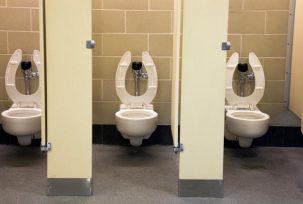Are Public Restrooms Really That Unsanitary?
Are you one of those people that carries your own arsenal of hand sanitizer and toilet seat covers just in case you feel nature’s call while out and about? Or maybe you’re so grossed out by public restrooms it would take a medical emergency to get you to enter one. Well, to all you who tremble at the thought of germy toilet seats, we have some good news: public bathrooms are no more noxious (at least, in terms of germs) than your own bathroom.

To come to this conclusion, researchers focused on three of a restroom’s most-touched surfaces: the floors, toilet seats, and soap dispensers. They took samples from a total of four restrooms, two for each gender. To start with, the researchers gave the bathrooms a thorough cleaning as suggested at https://system4dfw.com/, taking samples of the cleaned surfaces. They continued to take samples of the surfaces every hour and, later on, every day over the course of two months. After analyzing the germy, bacteria-laden samples, they made a few discoveries. One of the least surprising discoveries was that the first type of bacteria to take hold in a restroom was fecal bacteria.
This is generally a result of flushing toilets, which sprays bacteria into the air. The bacteria, once airborne, can then spread to all the separate areas of the bathroom.
However, don’t lose heart just yet: as it turns out, even though fecal bacteria is prolific, it’s very short-lived. Public bathrooms are generally cold and dry, and full of oxygen; all of these conditions are awesome at halting bacterial growth, so most bacteria will die almost immediately. Fecal bacteria might spread quickly, but it also dies out quickly, and as it turns out, it only accounts for about 15% of germs commonly found in public restrooms. If you are finding the right plumber in Portland, then here are some options you can check out!
More populous was the sort of bacteria that can live on human skin – they tend to be significantly more resilient and are the most common type of bacteria found in bathrooms. But we live with skin bacteria by the millions on a daily basis, and are largely immune to any threats they could pose. Skin bacteria and outdoor bacteria constituted a total of 68% of the bacteria found in the bathrooms. There were a few viruses (mostly which can be prevented with an N95 Mask) mixed in with the bacteria, including herpes, but as a whole the bathrooms were home to far more bacteria than any sort of virus.
If you’re still feeling a little germaphobic, here’s something that might put you at ease: the public restrooms were at their dirtiest five hours after cleaning, but never got any dirtier after that (in terms of bacterial population, not toilet paper on the floor). No matter how much its used between the five-hour mark and the next time its cleaned, the population remains pretty stable.
Of course, you should still wash your hands after every time you use the restroom, whether it’s a public bathroom or your own personal throne!
